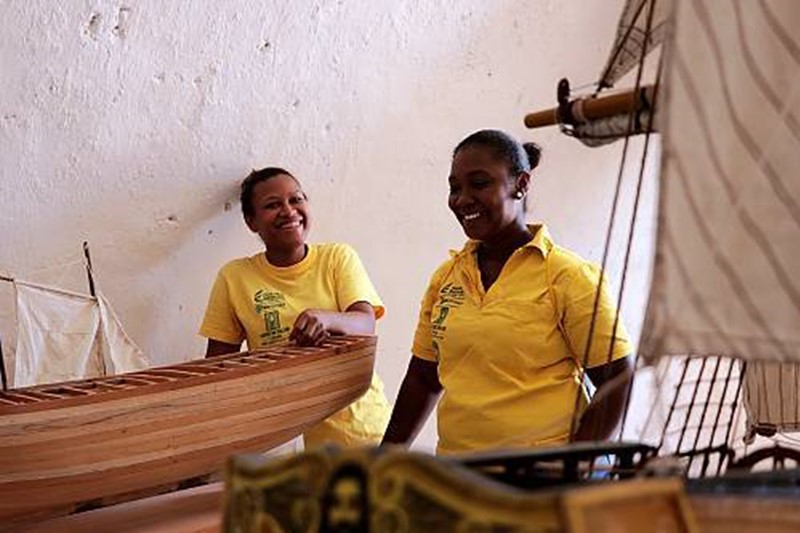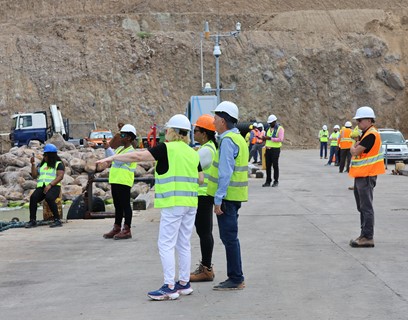
During its afternoon session on Thursday, the Intergovernmental Committee for the Safeguarding of the Intangible Cultural Heritage meeting in the Colombian capital inscribed six more elements to the Representative List of Intangible Cultural Heritage of Humanity. It also selected two projects for inclusion on the Register of Good Safeguarding Practices and allocated funds for a capacity building in safeguarding intangible cultural heritage programme in Burkina Faso.
Elements inscribed on the Representative List during the afternoon:
Gnawa, Morocco
Gnawa refers to a set of musical events, performances, fraternal practices and therapeutic rituals combining secular and sacred features including all-night therapeutic possession rituals in cities, and communal meals offered to marabout saints in rural areas. Originally practised by groups and individuals from slavery and the slave trade dating back to the 16th century, Gnawa now forms part of Morocco’s multifaceted culture and identity. The number of fraternal groups and master musicians is constantly growing in Morocco’s villages and major cities and Gnawa groups hold festivals all year round.
Traditional Turkish archery, Turkey
Traditional Turkish archery – practised both on foot and on horseback – encompasses principles, rituals and social practices, the craftsmanship of traditional equipment manufacture, archery disciplines and shooting techniques that have evolved over centuries. Traditional archery equipment, generally decorated with calligraphy, ornaments and marquetry, is also a key component of the element, requiring specific skills and knowledge. Bearers and practitioners ensure the continued viability of the element by adapting it to contemporary conditions, and there has been a remarkable increase in female archers and trainees in recent years.
Traditional turkmen carpet making art in Turkmenistan, Turkmenistan
Traditional Turkmen carpet making art in Turkmenistan relates to the production of traditional, beautifully ornamented, hand-woven woollen Turkmen carpets and carpet products. The carpets are dense in texture and ornamented with coloured patterns pertaining to one of the five main Turkmen tribes, serving as a sign of cultural identity. The context in which the carpet weaver lives, including local flora and fauna, is reflected in the carpet design. The carpets serve both as floor coverings and wall decorations, and special carpets are also woven for specific occasions.
Tradition of Kosiv painted ceramics, Ukraine
The tradition of Kosiv painted ceramics – dishes, ceremonial items, toys and tiles – arose in the 18th century and has a practical and artistic value. Made of local clay, the ceramics are characterized by their figurative designs, with the motifs depicting the history, life, folklore, beliefs and customs of the Hutsuls. Another characteristic feature of the ceramics is their traditional green, yellow and brown colours. Masters of the craft work in small, often family-owned workshops. The Kosiv College Department of Art Ceramics bears a special responsibility for sustaining the tradition.
Khorazm dance, Lazgi, Uzbekistan
The movements of the Khorazm dance, Lazgi, exemplify human creativity in reflecting the sounds and phenomena of surrounding nature, feelings of love and happiness. Centuries-old, the Lazgi dance represents real life in all its movements, informed by the social life and activities of local communities. Two types of the dance exist: the ‘scenery’ dance, involving concrete movements, and its interpretive form, focusing on improvisation and more changeable movements. Lazgi is a key form of self-expression transmitted over the generations through the creation of new versions of performances.
Practices of Then by Tày, Nùng and Thái ethnic groups in Viet Nam,Viet Nam
Then, an essential ritual practice in the spiritual life of the ethnic groups Tày, Nùng and Thái, reflects concepts about human beings, nature and the universe. Then ceremonies describe a journey in which the Master controls ghost soldiers travelling from earth to heaven to present items of worship and prayers for peace, good crops, health, etc. During the practice, the Then Master sings and plays a tính lute, wearing ceremonial dress. Then is always transmitted orally while the rituals are conducted, reflecting its succession across the generations.
The Representative List seeks to enhance visibility for the traditional practices and know-how of communities without recognizing standards of excellence or exclusivity.
Additions to the Register of Good Safeguarding Practices:
Safeguarding strategy of traditional crafts for peace building, Colombia
The safeguarding strategy of traditional crafts for peace building addresses the weakening of traditional crafts through a system of intergenerational transmission of knowledge between a master and apprentice based on the ‘learning by doing’ method. Training is combined with work, guaranteeing apprentices’ future employability. The strategy thus aims to train different sectors of the population, establish labour connections and foster entrepreneurship, giving priority to apprentices in situations of vulnerability. It also helps communities recognize the cultural and societal value of safeguarding different traditional skills and crafts.
Biocultural programme for the safeguarding of the tradition of the Blessed Palm in Venezuela, Venezuela(Bolivarian Republic of)
The activities associated with the biocultural programme for safeguarding the tradition of the Blessed Palm in Venezuela involve the gathering of several palm species in a specific mountain chain. After attending a religious ceremony, the ‘palmeros’ climb the mountain where they undertake various activities, including planting and pruning palm trees. Thirty years ago, the tradition appeared threatened by deforestation but the palmeros have modified the way the palm trees are collected and initiated a series of innovative educational measures. The programme has encouraged hundreds of children and young people to get involved.
The Register of Good Safeguarding Practices allows States Parties, communities and other stakeholders to share successful safeguarding experiences and examples of how they surmounted challenges faced in the transmission of their living heritage, its practice and knowledge to the future generation. These methods and approaches should be useful as lessons and models that can be adapted to other circumstances, including those in developing countries.
International assistance of US$387,770 from the Intangible Cultural Heritage Fund granted to:
Capacity building for stakeholders involved in safeguarding the intangible cultural heritage in Burkina Faso
A 24-month project in Burkina Faso which aims at building the capacities of stakeholders involved in safeguarding intangible cultural heritage in Burkina Faso. To be conducted in two stages, the project is directed at a process of training trainers, which is expected to lead to the establishment of a team of ten national facilitators who will train 225 local stakeholders. These stakeholders are then expected to work with their communities to safeguard living heritage at the local level and help ensure its effective sustainability.


